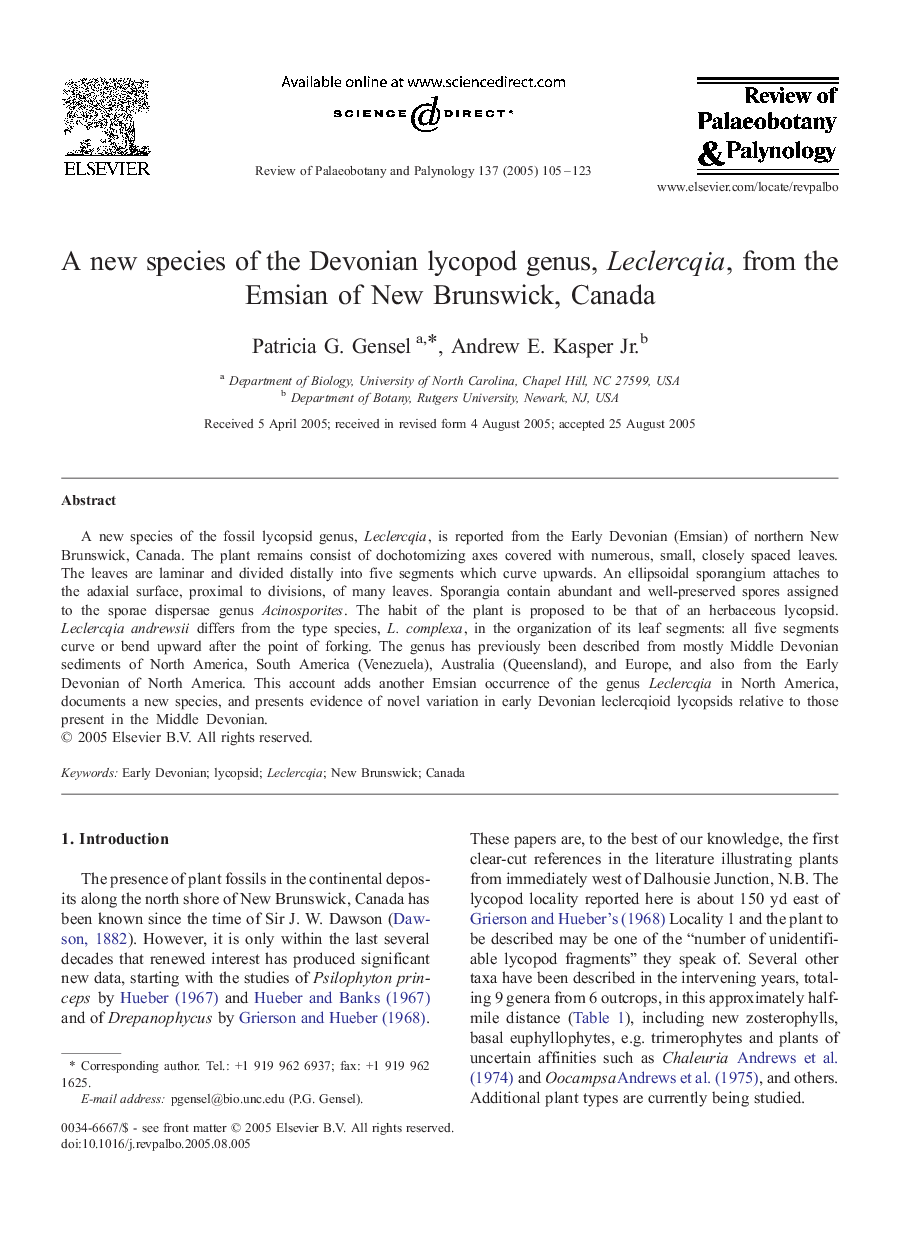| Article ID | Journal | Published Year | Pages | File Type |
|---|---|---|---|---|
| 10122029 | Review of Palaeobotany and Palynology | 2005 | 19 Pages |
Abstract
A new species of the fossil lycopsid genus, Leclercqia, is reported from the Early Devonian (Emsian) of northern New Brunswick, Canada. The plant remains consist of dochotomizing axes covered with numerous, small, closely spaced leaves. The leaves are laminar and divided distally into five segments which curve upwards. An ellipsoidal sporangium attaches to the adaxial surface, proximal to divisions, of many leaves. Sporangia contain abundant and well-preserved spores assigned to the sporae dispersae genus Acinosporites. The habit of the plant is proposed to be that of an herbaceous lycopsid. Leclercqia andrewsii differs from the type species, L. complexa, in the organization of its leaf segments: all five segments curve or bend upward after the point of forking. The genus has previously been described from mostly Middle Devonian sediments of North America, South America (Venezuela), Australia (Queensland), and Europe, and also from the Early Devonian of North America. This account adds another Emsian occurrence of the genus Leclercqia in North America, documents a new species, and presents evidence of novel variation in early Devonian leclercqioid lycopsids relative to those present in the Middle Devonian.
Related Topics
Physical Sciences and Engineering
Earth and Planetary Sciences
Palaeontology
Authors
Patricia G. Gensel, Andrew E. Jr.,
